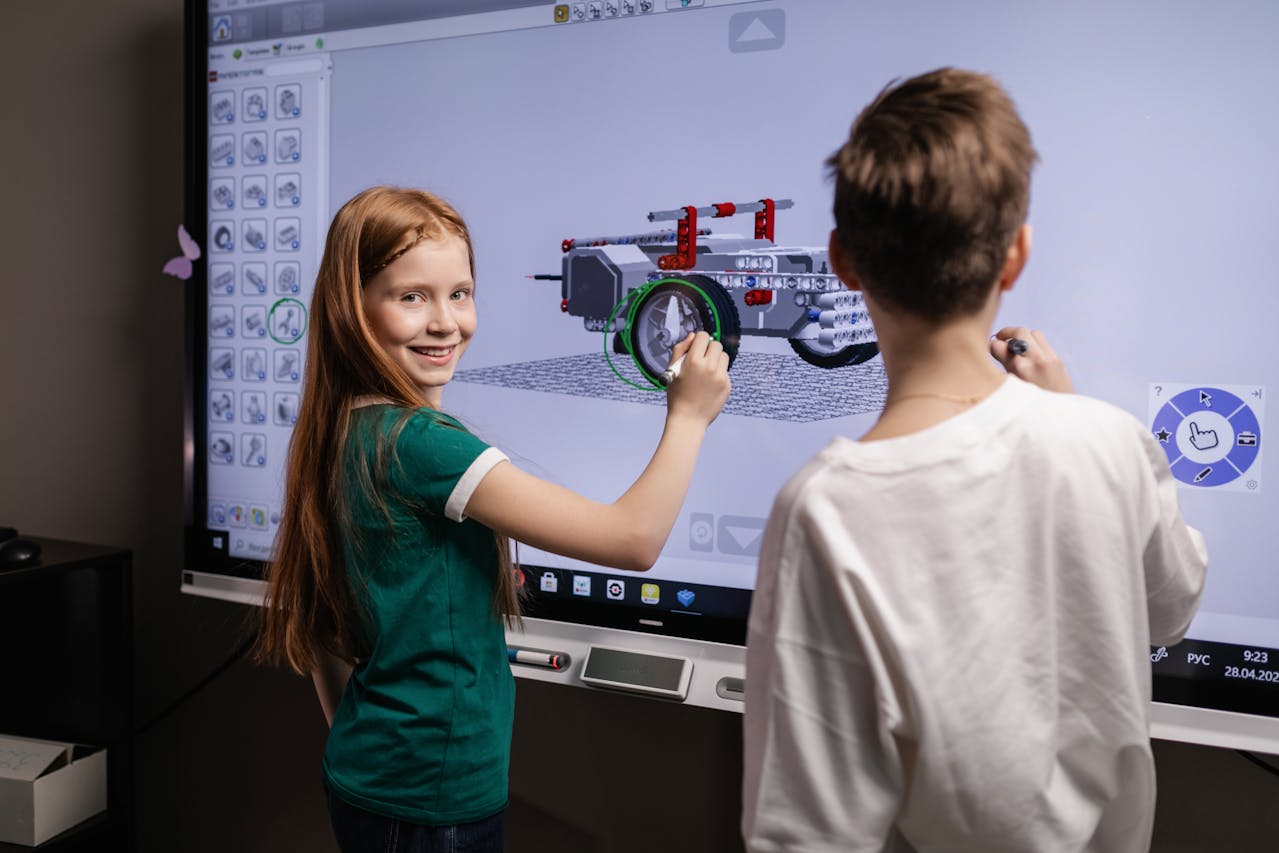
by TeachThought Staff
Ideally, a classroom today would be a veritable tech powerhouse encompassing various tools, resources, and integrated systems.
Comparative statistics provide a much clearer picture of how far we have come. In the 1980s and early 1990s, classrooms utilized blackboards with chalk or whiteboards with erasable markers. When slides were required, static slide projectors were brought in. From the 2000s onwards, technology accelerated at an unbelievable rate, eclipsing the advances of the previous century by a long margin.
Over a decade ago, personal computers were introduced into classrooms, with each student having access to a PC, Google Chrome Book, or similar device. Teachers have done their best to optimize the in-classroom experience with video streaming projectors, synced to laptops or PCs via Wi-Fi and Bluetooth. Books, pens, and pencils – the traditional ensemble of yesteryear – have largely been replaced by MacBooks, PCs, tablets, phablets, Kindles, and other devices.
But overall, the biggest recent change has likely been the integration of software apps. These applications, available at the App Store, provide powerful features and functions in compact downloadable code. One such option – many available – is the handwriting recognition app. This school notepad features AI (artificial intelligence) notetaking capabilities. In a modern classroom setting, with information exchange at a rate of knots, students can rely on app-style notebooks and journals to stay ahead of the curve.
So much more than standard notebooks, top-tier handwriting recognition apps present students with exceptional capabilities in the classroom. These include summaries, explanations, quizzes, guides, etc., on PDF files and notes. Plus, they facilitate conventional notetaking by hand, with creative virtual features on a veritable endless canvas. Ideal for transcribing notes, Apple pencil-compatible systems work flawlessly and rapidly to enhance classroom teaching and student learning experiences.
Multimedia Functionality in the Classroom
Multimedia functionality has also now been fully incorporated into most classrooms, revolutionizing how students engage with study material–an important innovation in how students absorb information. Let’s consider traditional teaching methods: static presentations and textbooks. These methods have served countless of students well over the years, but more effective ways exist to get the job done. Modern-day classrooms are now leveraging multimedia resources. They are creating interactive learning environments with high-tech resources.
Some classrooms have already adopted AI, ML, VR, and AR technology. Specialized equipment such as eyewear, holographic imaging, video streaming projectors, and other projects are being considered or implemented. The purpose, in all cases, is immersive learning. The greater the degree of engagement, the better it is for students. This is especially true with collaborative activities where students work in groups to accomplish objectives.
Cloud-based technology, the Intranet, and the Internet routinely combine to deliver learning opportunities packaged into online, social, and integrated multimedia solutions. Applications are also integrated into these multimedia solutions. 3D modeling is one such example of hands-on learning experiences made possible. Many classroom technology tools are available to teachers and students. We see evidence of this in the virtual learning environments where online classrooms, online assignments, online meetings, and online student groups exist. These are often provided for use as hybrid systems.
5 Of The Most Basic Tools For Tech-Infused Teaching Methods
Here is a table of five popular classroom technology tools that students use today: tools used to get started with tech-enhanced teaching methods.
| Technology Tool | Description |
|---|---|
| Zoom | A popular video conferencing platform that supports large virtual classrooms. |
| Meeting Owl | A 360° smart video camera that follows speakers, enhancing remote classes. |
| Whiteboard Owl | Captures and broadcasts whiteboard content in hybrid classrooms. |
| Learning Management System (LMS) | Software for delivering educational courses and tracking student progress. |
| Online Textbook Marketplaces | Platforms like Cengage and Chegg offer digital textbooks and course materials. |
Conclusion
Educational systems have evolved significantly over time. The addition of integrated technology has fast-tracked the learning experience for students and enhanced classroom instruction for teachers. Nowadays, education is more interactive than decades.
Even in the very beginning stages of adoption, tech-infused teaching can be more engaging and effective. We have seen big changes over time, including videoconferencing, smart camera technology, interactive whiteboards, integrated apps, and digital books. As technology continues to evolve, we must be receptive to these changes and implement the best of them in good time. Education has chosen a digital future, and it is incumbent upon stakeholders to facilitate these changes with the right training, education, and resources.
